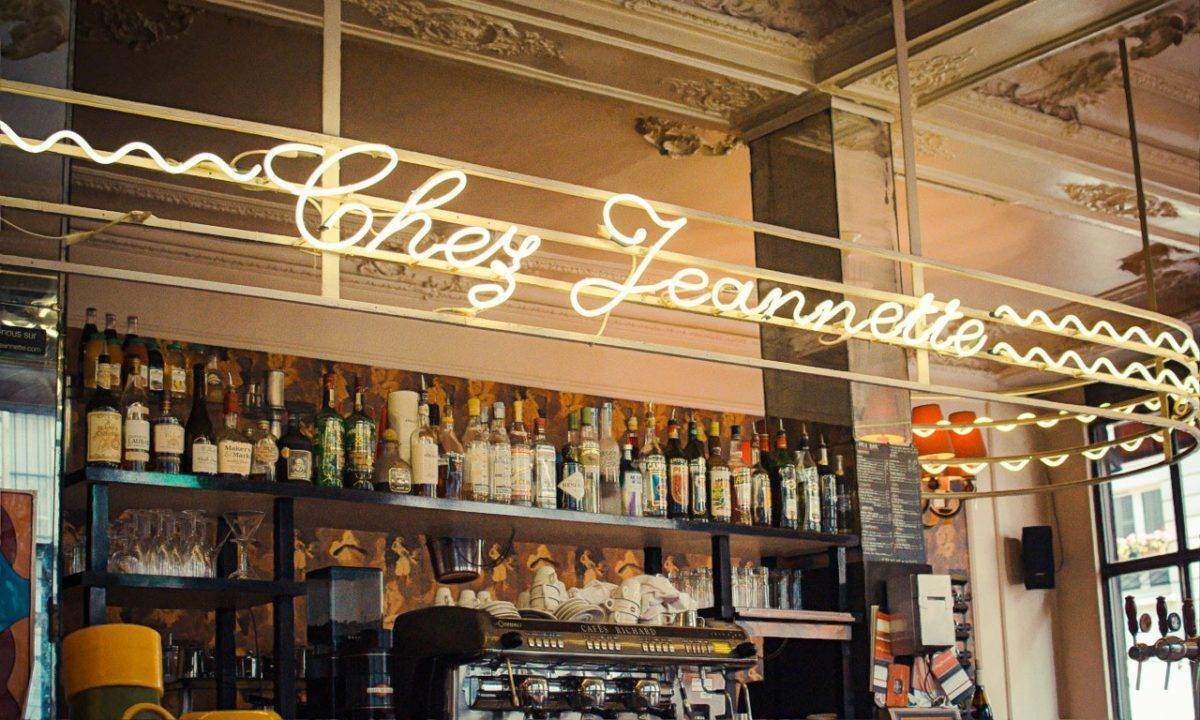We Americans can never get over Parisians’ aptitude for a drifting hour spent sitting at a café, drinking, smoking, talking when the mood strikes, which is often. We want to do it, too, and we try, when we visit Paris. We forego everything that’s been reinforced in us since our school days about the straight line between hard work and self-worth. We try to put down our phones, and order our drinks and stare at these creatures who know how to do it with purpose.
On a recent trip to Paris, I made this type of café life my central touristic endeavor. I’d tagged along on my boyfriend’s work trip, and had nothing else on my agenda for those few days. We stayed at a perfect old hotel in the 9th Arrondissement, an area that’s fairly quiet at night but close to places that aren’t, Montmartre to the north and the 10th, including the so-popular Canal Saint-Martin, to the east. We were primed to overlook every major site that Paris is famous for. We ate, and we drank, and we wandered.
I’d been to the Canal Saint-Martin on a couple different occasions, but I’d never explored the rest of the 10th Arrondissement. What I remember from the day we decided to do so: A gloriously summerlike autumn afternoon, a Parisian’s Paris, secret-seeming walkways, arches over the roads, grimier but better. Because I’d read about it somewhere, we kept an eye out for Chez Jeannette, and found it without trying any harder than that. We wandered in during that blasé afternoon to find a happy middle ground between empty and energetic—one could sense the buzz to come after the sun set, but for the moment, it was less bar, more cafe.
This place hasn’t been overly cleaned up by the team that took it over from the real Jeannette a few years ago, and it’s happily free of the suspicious sheen that mars some cafes closer to the center. Decades collide here. Generational divides are soldered. The ornate moldings of a lost century meet the neon signage of the postwar era (which might have been produced more recently, hard to tell). As the favored decorative accent, the color red hints at both decadence and propriety. Certain faded elements make one think of when those things were new. It produces a happy nostalgia.
Chez Jeannette feels like a place that has been there awhile. Which it has. It also feels like a place that is entirely of this particular moment. Which it is. We got a table at the window, and watched the street activity, with its mix of working class and creative class, over cafes au lait. A few hours later, Chez Jeannette would metastasize into what could be a noir bit of nightlife were it not for the shoulder-to-shoulder hoards making a more bombastic thing out of it, a standing room affair spilling out onto the sidewalks where the point, perhaps, is to be seen seeing someone see you.
The problem with recommending a place to grab a drink in Paris happens to involve the sheer impossibility of failing to find a good spot to have a drink in Paris. Just by wandering around for five minutes, it’ll happen. In one of the few cities in the world where even the tourist spots exude the thing that compels people to book their trips there, then, recommendations have to promise something truly unique, and that uniqueness must manifest in the visitor as a certain level of bliss.
On another night, we wandered into a bar on the Left Bank that served its sugary drinks out of baby bottles. Unique, but also horrid, and it didn’t make the cut. Chez Jeannette does.






